The 2011 LCGC Pittcon Awards
LCGC North America
Now in its fourth year, the LCGC Awards have quickly grown into one of the premier honors for both emerging and veteran practitioners of chromatography.
Now in its fourth year, the LCGC Awards have quickly grown into one of the premier honors for both emerging and veteran practitioners of chromatography. In this relatively short timeframe, the awards have built a prestigious list of awardees from a variety of different specialty areas, and this year in particular, generated a great deal of interest from all across the field of chromatography.

JERRY DRIENDL/GETTY IMAGES
The prestige associated with these awards became well established very early on. Previous Lifetime Achievement Awards have gone to such illustrious figures as Walt Jennings, formerly of J&W Scientific and the University of California at Davis (2008), Harold McNair of Virginia Tech (2009), and Georges Guiochon of the University of Tennessee (2010), and Emerging Leader Awards have been given to well known experts Gert Desmet of the Free University of Brussels (2008), Kevin Schug of the University of Texas, Arlington (2009), and Jared Anderson of the University of Toledo (2010).
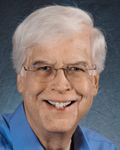
James W. Jorgenson, University of North Carolina at Chapel Hill
The LCGC Awards this year honor one of the industry's giants in Lifetime Achievement Award winner James W. Jorgenson of the University of North Carolina at Chapel Hill, and one of the industry's brightest young stars, Dwight R. Stoll of Gustavus Adolphus College. The awards will be presented in the LCGC & Spectroscopy Pittcon Theater on March 15 and 16. Following each presentation, the award winner will be interviewed. Videos of the interviews will be available on our website on March 22 (www.chromatographyonline.com/LabTV).
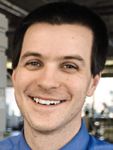
Dwight R. Stoll, Gustavus Adolphus College
Lifetime Achievement Award
To those who have spent any amount of time in the field of chromatography, Jorgenson needs no introduction. "Jim Jorgenson is a thought leader for separation science," says Robert Kennedy, of the University of Michigan, who did his doctorate under Jorgenson.
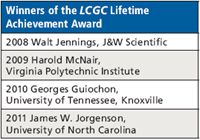
Table 1 Winners of the LCGC Lifetime Achievement Award
Jorgenson received his BS in chemistry from Northern Illinois University in 1974 and his Ph.D. in chemistry from Indiana University in 1979, under Prof. Milos Novotny. He has been a member of the faculty at the University of North Carolina at Chapel Hill ever since, including serving as the department chair from 2000 to 2005. He is now the William Rand Kenan, Jr. Distinguished Professor in the Department of Chemistry there.

DIANE MACDONALD/GETTY IMAGES
Jorgenson made his mark very early in his career at UNC Chapel Hill with his breakthrough work on capillary electrophoresis (CE). Jorgenson realized that to achieve high-resolution separations with CE, smaller capillaries and better detectors were needed (1–6). He then proceeded to develop systems that could achieve separations equivalent to hundreds of thousands of theoretical plates in a few minutes. This pioneering work developed CE as a viable and powerful tool for microscale chemical separations. Capillary gel electrophoresis later enabled the sequencing of the human genome.
For this work, Jorgenson won the Electrophoresis Award of the Frederick Conference on Capillary Electrophoresis in 1994. A special issue of the journal Electrophoresis was dedicated to Jorgenson in October 2001.
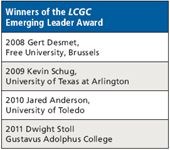
Table 2 Winners of the LCGC Emerging Leader Award
Jorgenson's work on the use of ultrahigh pressures in liquid chromatography, first published in 1997 (7), is widely regarded as critical to the success of what is now known as ultrahigh-pressure liquid chromatography (UHPLC). He published some of the first work using capillary columns to dissipate the heat generated by high-pressure systems and demonstrated early high-pressure results at 100,000 psi on systems he built at the university.

Panoramic/Getty Images
Jorgenson also was one of the first to study multidimensional chromatography or multidimensional electrophoresis coupling CE with high performance liquid chromatography (HPLC), and later interfacing mass spectrometry to CE–HPLC to make a truly 2D hyphenated system. He continues to pursue techniques of greatly increased peak capacity in analytical separations, such as LC–CE, as well as techniques with extreme resolving power, such as flow counterbalanced capillary electrophoresis (FCCE), to solve problems in complex mixture analysis.
Jorgenson has authored or coauthored more than 100 journal articles and has served on the editorial boards of seven journals, including Analytical Chemistry, Journal of Chromatography, Journal of Microcolumn Separations, and Journal of Separation Science. He holds six patents, and has won numerous awards; a few of the most prestigious include:
- ACS Award in Chemical Instrumentation (1992)
- Martin Medal of the Chromatographic Society (1992)
- Eastern Analytical Chemistry Award in Separation Science (1995)
- Dal Nogare Award, Chromatography Forum of the Delaware Valley (1998)
- ACS Award in Chromatography (1993)
- ACS Award in Analytical Chemistry (2007)
- Election to the American Academy of Arts and Sciences (2007)
- Ralph N. Adams Award in Bioanalytical Chemistry (2011)
In short, Jorgenson's achievements are immense, and LCGC is honored to bestow on him the 2011 Lifetime Achievement Award.
Emerging Leader Award
Dwight R. Stoll of Gustavus Adolphus College (St. Peter, Minnesota) is a name that readers will be familiar with in the very near future, if they are not already. And if the accolades heaped upon him from colleagues are any indication, his name may be familiar to readers even sooner.
In 2007, Stoll received his Ph.D. in Analytical Chemistry from the University of Minnesota (Minneapolis, Minnesota), where he studied under Professor Peter W. Carr. Stoll is currently an Assistant Professor at Gustavus Adolphus College, where he has taught since 2008.
Beginning at the University of Minnesota and continuing at Gustavus Adolphus College, Stoll developed fast, comprehensive two-dimensional high performance liquid chromatography (c2D-HPLC) as an analytical tool capable of quickly separating and quantifying hundreds of chemical constituents of complex mixtures. The principal goal of that work was to move 2D-LC from a niche technique, although an extremely important one in the field of proteomics, for use with very complex samples (containing thousands of components) and to make it a much more practical, accessible method.
When Stoll first began that work, state-of-the-art 2D-LC required up to 10 h for a full comprehensive 2D run if the resolution gained in the first dimension was not to be sacrificed in the second. As a result of his work, Stoll designed and built a 2D-LC instrument that has many unique features and made it possible to do comprehensive 2D-LC with an effective (not hypothetical) peak capacity of more than 1000 in 30 min, thereby reaching rates of two peaks per second. Such peak capacities have a separating capacity equivalent to several hundred thousand plates in 1D-LC. This work offers many advantages for metabolomics studies and any work with complex samples.
As a graduate student, Stoll also started a collaboration between the university and the Minnesota Bureau of Criminal Apprehension to develop a 3-min gradient elution method to screen for drugs of abuse. While at the University of Minnesota, Stoll also helped develop methods for the analysis of the plant hormones in native and mutant maizes. He developed a pair of stationary phases that, when used in 2D-LC, separates plant hormones, which are typically derivatives of indole acetic acid.
At Gustavus Adolphus College, Stoll's research group began to develop 3D-HPLC based on the mode of multidimensional separation referred to as "heartcutting." The goal was to develop 3D-HPLC as a powerful, yet flexible "analytical machine" in which the large resolving power associated with multidimensional separations could be used for trace analysis of a variety of compounds in a variety of matrices, but with minimal sample preparation and method development for each new analyte–matrix combination encountered. Despite the low concentrations of compounds (parts per trillion initially, parts per billion after preconcentration by solid-phase extraction), the team was able to quantify them accurately even using UV detection. At this stage of his career, Stoll has a Hirsch Index of 11, meaning that 11 of his papers have been cited 11 or more times. He has three first-author papers that have been cited between 59 and 76 times, with the oldest of those papers having been published in 2005. Stoll was also the lead author of an extensive review of 2D-LC that will undoubtedly be a classic (8). It was the most cited paper in the journal in the period 2007–2009.
Dr. Carr said that Stoll was quite possibly the best student he ever encountered in his career. "In my 41 years of teaching college, I have never before been privileged to have such a talented student combining a passion for laboratory work with a deep understanding and appreciation for the role of theory."
The Role of Previous Winners
Previous LCGC Award winners have played a leading role in the various publications and projects here at LCGC. Previous Lifetime Achievement Award winners Walt Jennings and Harold McNair have both written installments of LCGC's "History of Chromatography" column (9,10), with Jennings writing a heartfelt description of his time in the field of chromatography that went beyond the science to describe many of the people and places that have been important to him. McNair wrote a similar installment in which he took a more amusing approach to his description of the old days of gas chromatography. Both have remained active in LCGC's peer review process and in advisory capacities generally.
The Emerging Leader Award winners have played an important role as well. Gert Desmet wrote an insightful installment of Ron Majors' popular "Column Watch" column (11), in which he compared column techniques to optimize HPLC column performance. The 2009 winner, Kevin Schug, has become very involved in LCGC's "CHROMacademy," where he writes frequent blog posts and has presented in several tutorial web seminars. Jared Anderson, the winner of last year's award, was recently interviewed for our "Chromatography Corner" and will participate in LCGC's 2011 Pittcon Theater. In summary, you can expect to hear a lot from this year's award winners in the future, as they will be invited to take leadership roles at LCGC as well.
References
(1) J.W. Jorgenson and K.D. Lukacs, J. High Resolut. Chromatogr. 4, 230–231 (1981).
(2) J.W. Jorgenson and K.D. Lukacs, Anal. Chem. 53, 1298–1302 (1981).
(3) J.W. Jorgenson, and K.D. Lukacs, J. Chromatogr. 218, 209–216 (1981).
(4) J.W. Jorgenson and K.D. Lukacs, Clin. Chem. 27, 1551–1553 (1981).
(5) J.W. Jorgenson and K.D. Lukacs, Science 222, 266–272 (1983).
(6) J.W. Jorgenson, Trends Anal. Chem. 3, 51–54 (1984).
(7) J.E. McNair, K.C. Lewis, and J.W. Jorgenson, Anal. Chem. 69, 983–989 (1997).
(8) D.R. Stoll, X. Li, X. Wang, P.W. Carr, S.E.G. Porter, and S.C. Rutan, J. Chromatogr. A 1168, 3–43 (2007).
(9) W. Jennings, LCGC 26(7), 626–631 (2008).
(10) H. McNair, LCGC 28(2), 138–145 (2010).
(11) G. Desmet, LCGC 26(6), 514–531 (2008).
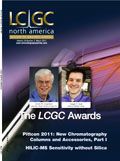
Detecting Hyper-Fast Chromatographic Peaks Using Ion Mobility Spectrometry
May 6th 2025Ion mobility spectrometers can detect trace compounds quickly, though they can face various issues with detecting certain peaks. University of Hannover scientists created a new system for resolving hyper-fast gas chromatography (GC) peaks.
Altering Capillary Gas Chromatography Systems Using Silicon Pneumatic Microvalves
May 5th 2025Many multi-column gas chromatography systems use two-position multi-port switching valves, which can suffer from delays in valve switching. Shimadzu researchers aimed to create a new sampling and switching module for these systems.

.png&w=3840&q=75)

.png&w=3840&q=75)



.png&w=3840&q=75)



.png&w=3840&q=75)














